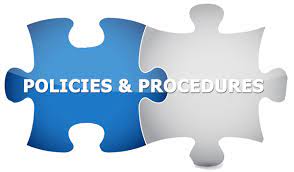The year in Foreign Corrupt Practices Act (FCPA) enforcement started off with a bang on January 10 with the announcement of a resolution of the outstanding SAP enforcement action. The bribery schemes used by SAP were massive in scope and literally worldwide in geographic area. As usual, Harry Cassin at the FCPA Blog broke the story for the compliance profession. SAP SE agreed to pay the Department of Justice (DOJ) and Securities and Exchange Commission (SEC) approximately $222 million in penalties and disgorgement. SAP also entered into a three-year deferred prosecution agreement (DPA) with the Department of Justice imposing a $118.8 million criminal penalty and an administrative forfeiture of $103.4 million. Cassin went on to the note that the DOJ “will credit up to $55.1 million of the criminal penalty against amounts that SAP pays to resolve an investigation by law enforcement authorities in South Africa for related conduct, and up to the full forfeiture amount against disgorgement that SAP pays to the SEC or South African authorities.”
The SEC Press Release noted that the illegal actions included bribery schemes in the following countries: South Africa, Malawi, Kenya, Tanzania, Ghana, Indonesia, and Azerbaijan. SAP was held liable by the SEC based up its ownership of American Depositary Shares (ADR) shares which are listed on the New York Stock Exchange and violating the FCPA by employing third-party intermediaries and consultants from at least December 2014 through January 2022 to pay bribes to government officials to obtain business with public sector customers in the seven countries mentioned above. The SEC total fine and penalty was nearly $100 million. This figure represents disgorgement to the SEC of “$85 million plus prejudgment interest of more than $13.4 million, totaling more than $98 million, which will be offset by up to $59 million paid by SAP to the South African government in connection with its parallel investigations into the same conduct.”
What They Said
In a DOJ Press Release, Acting Assistant Attorney General for the Criminal Division, Nicole M. Argentieri said, “SAP paid bribes to officials at state-owned enterprises in South Africa and Indonesia to obtain valuable government business. Today’s resolution—our second coordinated resolution with South African authorities in just over a year—marks an important moment in our ongoing fight against foreign bribery and corruption. We look forward to continuing to strengthen our relationship with South African authorities and others around the world. This case demonstrates not only the critical importance of coordinated international efforts to combat corruption, but also how our corporate enforcement policies incentivize companies to be good corporate citizens, by cooperating with our investigations and appropriately remediating, so that we can take strong action to address misconduct.”
U.S. Attorney Jessica D. Aber for the Eastern District of Virginia also noted, “SAP has accepted responsibility for corrupt practices that hurt honest businesses engaging in global commerce,” said. “We will continue to vigorously prosecute bribery cases to protect domestic companies that follow the law while participating in the international marketplace.”
Postal Inspector in Charge of Criminal Investigations Eric Shen noted, “When the mails are used in furtherance of a fraud or corruption scheme, borders are not an obstacle for U.S. Postal Inspectors. Postal inspectors, with our FBI law enforcement partners and Justice Department prosecutors, followed the wide-spread trail of bribes and corruption from South Africa to Indonesia. This joint effort resulted in the defendant company paying a significant criminal penalty and agreeing to long-term remedial measures.”
Assistant Director in Charge of the FBI’s Los Angeles Field Office, Donald Always added “This successful resolution against SAP is another example of the power of relationships and persistence. The sustained diligence by the prosecution team and continuous collaboration with South African law enforcement, regulators, and prosecutors identified corrupt activity in multiple countries. The FBI will continue our nonstop efforts to identify, investigate, and prosecute companies willfully engaging in corrupt activities around the world.”
Finally, Charles E. Cain, Chief of the SEC Division of Enforcement’s FCPA Unit, said in the SEC Press Release, “Our order holds SAP accountable for misconduct that spanned seven jurisdictions and persisted for several years and serves as a stark reminder of the need for global companies to be attuned to both the risks of their business and the need to maintain adequate entity-level controls over all their subsidiaries.”
Order and Information
The SEC Order found that SAP violated the FCPA by employing third-party intermediaries and consultants from at least December 2014 through January 2022 to pay bribes to government officials to obtain business with public sector customers in the seven countries mentioned above.” Additionally, “SAP inaccurately recorded the bribes as legitimate business expenses in its books and records, despite the fact that certain of the third-party intermediaries could not show that they provided the services for which they had been contracted.” Finally, “SAP failed to implement sufficient internal accounting controls over the third parties and lacked sufficient entity-level controls over its wholly owned subsidiaries.”
The DOJ Information found that between approximately 2015 and 2018, “SAP, through certain of its agents, engaged in a scheme to bribe Indonesian officials to obtain improper business advantages for SAP in connection with various contracts between and among SAP and Indonesian departments, agencies, and instrumentalities, including the Kementerian Kelautan dan Perikanan (the Indonesian Ministry of Maritime Affairs and Fisheries) and Balai Penyedia dan Pengelola Pembiayaan Telekomunikasi dan Informatika (an Indonesian state-owned and state-controlled Telecommunications and Information Accessibility Agency).”
Given SAP’s prior SAP enforcement history, its recidivist status FCPA status, its culture of non-compliance (at the very least), a non-prosecution agreement (NPA) from 2021 with the DOJ’s National Security Division, as well as administrative agreements with the Departments of Commerce and the Treasury relating to export law violations; one might wonder SAP was able to receive such a superior result. Over the next several blog posts, we will be exploring that issue as well a host of others for the compliance professional. I hope you will join me over the next few blog posts.











